
Bathtubs: An In-Depth Product Guide
Unless you grew up in a tiny, inner-city apartment where space was at a premium, the chances are that you know what a bathtub is. Bathtubs have been around for millennia, and there is nothing quite like the relaxing sensation of enjoying a nice, long, warm bath after a long day of work. Though taking a bath is generally more water wasteful than taking a shower, we all deserve a bit of self-care from time to time. The process of purchasing a new bathtub, however, can often be a bit stressful. In the past, bathtub options were generally limited to choosing between almost identical off-white colors. Today, on the other hand, bathtubs come in a dizzying array of shapes, sizes, and colors. Add to that an increasing number of luxury functions (and yes, there are smart bathtubs on the market today). Picking the best bathtub can build up enough stress that you will deserve a relaxing bath when the process is finished. This guide offers a complete look at the best bathtub for your home.
Table of Contents
- What Is a Bathtub?
- What Types of Bathtubs Are Available?
- When Was the Bathtub Invented?
- What Types of Bathtubs Are the Most Durable?
- Can Bathtubs Be Recycled?
- Can You Install a Bathtub Yourself?
- Do Smart Bathtubs Exist?
- What Are The Best Brands of Bathtubs?

What Is a Bathtub?
A bathtub is a bathroom fixture used for bathing, whether it be soaking in warm water or a stand-up shower with a curtain. Most modern bathtubs are made from either thermoformed acrylic, porcelain-enameled cast iron, porcelain-enameled steel, or fiberglass-reinforced polyester. Bathtubs have hot and cold water connections used to fill the tub and a water overflow and waste drain allowing the tub to drain if the water is above the fill line.
Related Products
Shop Related Products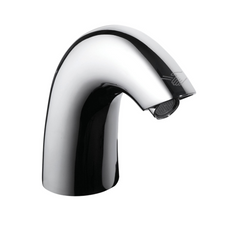
TOTO Standard EcoPower 0.5 GPM Faucet TEL105-D10E#CP
$498.69
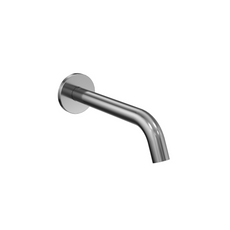
TOTO Helix® Touchless Wallmount Faucet - 0.5 GPM
$608.00 - $626.71
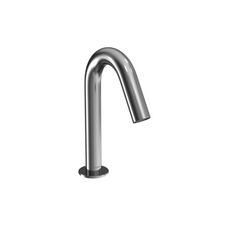
TOTO Helix® Touchless Polished Chrome Faucet - 0.5 GPM
$535.68 - $547.20
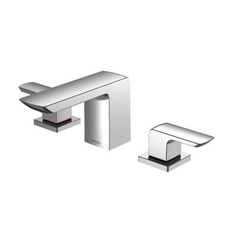
Toto GR WIDESPREAD FAUCET - 1.2 GPM
$519.00 - $726.00
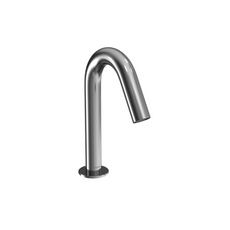
Toto Helix EcoPower 0.35 GPM Touchless Bathroom Faucet
$492.48 - $562.80
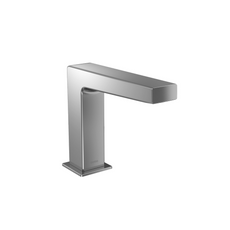
TOTO Axiom Touchless Faucet
$702.53 - $732.12

Toto LB Single-Handle Faucet - 1.2 GPM - Vessel
$266.00
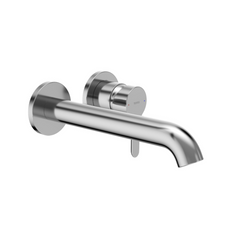
Toto LB WALL-MOUNT FAUCET - LONG - 1.2 GPM
$368.00
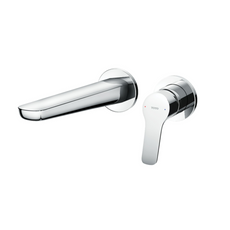
Toto GS WALL-MOUNT FAUCET - 1.2 GPM
$383.00

Toto LB WIDESPREAD FAUCET - 1.2 GPM
$425.00
What Types of Bathtubs Are Available?
There is an abundance of bathtub styles to choose from. Some of the most popular include the classic cast-iron clawfoot style, jacuzzi tubs with jets, and soaker tubs. Bathtubs can be freestanding or can be enclosed, alcove style with walls on three sides, or corner set.
When Was the Bathtub Invented?
The earliest known personal-sized bathtub was dated to 1,700 BCE on the Isle of Crete. The roughly five-foot-long pedestal tub was built from fired pottery and found in the Palace of Knossos. Though pottery bathtubs are no longer the norm, the design of bathtubs throughout history has been surprisingly similar. Only recently, acrylic thermoformed bathtubs have allowed bathroom designers to experiment with different tubs shapes.

Bathtubs are most commonly situated in a bathroom with a shower or as a stand-alone fixture. In smaller bathrooms, the shower/bathtub unit is most common. In contrast, more spacious bathrooms tend to allow for stand-alone options. Modernist bathroom design seems to be trending towards freestanding tubs. One architect claims that up to 90 percent of bathroom renovations are opting for freestanding styles.
Another difference to consider is related to the fundamental design of bathtubs and how they are to be used. Western-style bathtubs, which are the most common in North America, are designed for the bather to lie down while bathing. These bathtub types are usually shallower and more prolonged in their design. On the other hand, European or Asian-style bathtubs are designed so that the bather sits up when bathing. Known as "furo" bathtubs in Japan, these tubs are usually much shorter and deeper.
The acrylic bathtubs becoming increasingly common in today's market also offer dozens of different features, including personal seats, handles, underwater lighting, jets, and other features.
What Types of Bathtubs Are the Most Durable?
The most durable bathtubs are made from cast iron. In the same way that your great-grandmother's cast iron cookware continues to outlast the cheap frying pans you buy on the sale rack at Wal-Mart, cast iron tubs will almost always outlast their acrylic and fiberglass-reinforced plastic bathtubs. Most cast iron bathtubs sold today have a finish coat made from enamel. They are also fire-polished for a smooth and ageless finish. Cast iron tubs will cost significantly more. Due to their weight, homeowners should expect a higher installation fee if they pay for professional installation. Suppose you plan to place the cast iron tub on the second floor of your home. In that case, you might also need to check with the installer to make sure that your floor is sturdy enough to withstand the extra 300-400 pounds that most cast iron tubs weigh.
Acrylic tubs are fairly durable despite being much lighter than cast iron. Homeowners should expect an acrylic tub to last at least 15 years, significantly longer than fiberglass tubs. However, not all acrylic tubs are made alike, and the thinner models are generally flimsier and more prone to cracks. If you are considering purchasing an acrylic tub, look for double-skinned acrylic baths at least 8mm thick.
Can Bathtubs Be Recycled?
Incorporating recycled content into your new home or any renovation project is one of the best ways to reduce the embodied energy footprint of your house. Fortunately, many builders and companies providing home products are continuously looking for ways to source recycled content. In the specific case of bathtubs, cast iron options are generally the best for recycled content. In many cases, cast iron tubs will be made from up to 80 percent recycled material. Better yet, consider searching for antique or vintage cast iron tubs on eBay, Craigslist, or other online sources. With a little bit of refurbishing, you might be able to turn a vintage 1920s claw foot cast iron tub into the centerpiece of your bathroom for a minimal investment.
Acrylic tubs are generally manufactured without recycled content. Most acrylic tubs are surface coated with a type of plastic known as PMMA. Though PMMA is recyclable, it is close to impossible to separate when it is combined with glass fiber. This feature essentially renders the acrylic tub non-recyclable. Most thrown-out acrylic bathtubs are usually shredded into pieces and landfilled.
If you do have an old acrylic-style tub that gets cracked and needs to be replaced, consider upcycling or repurposing the tub into a useful "second life." Old acrylic tubs can be transformed into a planter in your garden or even a unique chaise lounge for your patio.

Can You Install a Bathtub Yourself?
Bathtub installation is a relatively "approachable" DIY task, even for homeowners who do not have advanced building skills. You will need to know a bit about basic plumbing. Still, most people should remove an old tub and install the new one in a day without hiring professional labor. The basic process goes something like this:
- Turn off the main water valve into your bathroom.
- Disconnect the drain flange, overflow cover, and drain assembly.
- Separate the old tub from the wall. Tubs are usually connected directly to the wall studs through a flange.
- Remove the tub and set up a time for it to be recycled or store for a future recycling project.
- Set the new tub into place, and install a 2 x 4 stringer directly to the studs. This stringer will support the tub along its length.
- Reattach the overflow drain assembly and connect it to the existing plumbing in your bathroom.
For a complete video tutorial on how to install a new bathtub, check out this YouTube video.

Do Smart Bathtubs Exist?
Yes, of course! Smart technology is infiltrating virtually every aspect of our homes, including our bathrooms. We've written before about smart technology for self-cleaning toilets, and smart bathtubs are another luxury addition to our bathrooms' growing smart technology trends.
Smart bathtubs are indeed designed for the luxury bathing experience. They also have a price tag that will frighten away most people. Earliest this year, the company Kohler released their Stillness Bathtub. This app and voice-controlled luxury bathtub combine water, steam, lighting, and aroma to allow users to "personalize" their relaxing bathing experience. It also comes with a price of $16,000, which isn't so relaxing and soothing, but we digress.
What Are The Best Brands of Bathtubs?
If you don't have $16,000 in savings to splurge on a new smart bathtub, there are still plenty of quality bathtub options out there for you to choose from. Some of the best bathtub brands on the market today include Woodbridge Bath, Sinkology, and Kohler.
Let's take a look at each.

Woodbridge Bath
Woodbridge offers a variety of bathtubs, including both acrylic and cast iron models. If you want a bit more luxury, they have whirlpool options incorporating jets and comfortable seating. Their stand-alone tubs also come in a wide variety of sleek designs for homeowners looking to increase the visual appeal of their bathroom.

Sinkology Bathtubs
Sinkology is one company challenging the acrylic/cast iron dichotomy in bathtub design is Sinkology. This brand has recently released several designs of copper bathtubs and soaking tubs. Though significantly more expensive, copper tubs will conduct heat faster and maintain heat longer than traditional bathtubs. With a copper tub, then, you won't have to worry about your bathwater going cold while you're trying to finish up the final pages of an engaging novel. Also, copper tubs can be made from 100 percent recycled material.

Kohler Bathtubs
Kohler is another trusted name in the bathtub market. This company also has a massive variety of bathtubs for homeowners to choose from. The company recently released a line of tubs made from Lithocast, a solid-surface acrylic that appears to be finely honed white stone but is warm to the touch and comfortable on the skin. They also offer cast iron and regular acrylic tubs.
Shopping for a new tub certainly comes with its fair share of decisions. The best tub for your home will largely depend on your design preferences, the available space in your bathroom, and your bathing needs. However, cast iron tubs will almost always be the most durable option as a general rule of thumb. In terms of recyclable materials, cast iron and copper tubs are better options than acrylic or fiberglass for homeowners wanting to lower the footprint of their bathing experience. It's important to remind readers that regular bathing in a tub will generally use more water than a shower. If you prefer a tub over the shower, opting for a smaller tub (42 gallons or less) will significantly less water than large tubs (80 gallons or more).
Disclaimer: This article does not constitute a product endorsement however Rise does reserve the right to recommend relevant products based on the articles content to provide a more comprehensive experience for the reader.Last Modified: 2021-07-20T16:56:10+0000Article by:
Tobias Roberts
Tobias runs an agroecology farm and a natural building collective in the mountains of El Salvador. He specializes in earthen construction methods and uses permaculture design methods to integrate structures into the sustainability of the landscape.